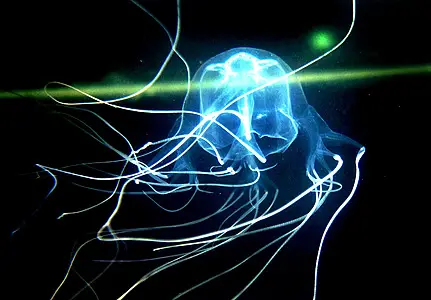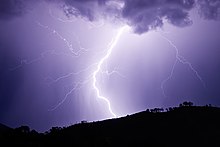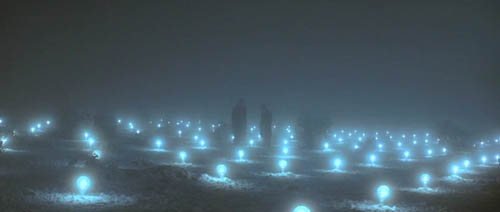Playing with Sparklers - Vimeo Clip - click here!
Thursday 12 January 2012
Monday 9 January 2012
Jellyfish
I watched the film '7 Pounds' the other night and after my research so far thought that the image of jellyfish fits in quite well.


Field of Light : Bruce Munro
Giancarlo Nero
The concept of the light bulb scene in The Prestige reminded me of an Italian artist, Giancarlo Nero's installation of light, 'Massimo Silenzio'. It was installed in the largest chariot racing stadium ever built, Circus Maximus and transformed the whole dusty arena floor at night with colour changing bulbs.
BY DAY



BY NIGHT



BY DAY



BY NIGHT



Nikola Tesla
Known as 'The man who electrified the world'

I heard about Tesla through the film Prestige (which is amazing by the way!) 


Static Electricity
Knowing the substation in Ancoats was centred around electricity this is what I naturally felt drawn to inspire me in the beginning but needed a focus to look at in detail as elecricity is such a broad field. Static Electricity is particularly interesting, such as lightning.



Infrared
Night-vision devices using infrared illumination allow people or animals to be observed without detection. Infrared radiation is popularly known as "heat radiation", but light and electromagnetic waves of any frequency will heat surfaces that absorb them.
I came across this video on youtube whilst searching about infrared :
I came across this video on youtube whilst searching about infrared :
The effect of the camera appears to portray the cat as quite ghost like. This reminded me of the idea od genius loci and spirits and how they could be portrayed.
Night vision
Night-useful spectral range techniques can sense radiation that is invisible to a human observer. Human vision is confined to a small portion of the electromagnetic spectrum called visible light. Enhanced spectral range allows the viewer to take advantage of non-visible sources of electromagnetic radiation (such as near-infrared or ultraviolet radiation). Some animals can see using much more of the infrared and/or ultraviolet spectrum than humans.
Humans have poor night vision opposed to animals as the human eye lacks a tapetum lucidum in the back of the eye that reflects light back through the retina, increasing the amount of light available for it to capture. This is found in many nocturnal animals and some deep sea animals.
Night vision technologies can be broadly divided into three main categories:
Humans have poor night vision opposed to animals as the human eye lacks a tapetum lucidum in the back of the eye that reflects light back through the retina, increasing the amount of light available for it to capture. This is found in many nocturnal animals and some deep sea animals.
Night vision technologies can be broadly divided into three main categories:
- Image intensification
- Image intensification technologies work on the principle of magnifying the amount of received photons from various natural sources such as starlight or moonlight. Examples of such technologies include night glasses and low light cameras.
- Active illumination
- Active illumination technologies work on the principle of coupling imaging intensification technology with an active source of illumination in the near infrared (NIR) or shortwave infrared (SWIR) band. Examples of such technologies include low light cameras.
- Thermal imaging
- Thermal imaging technologies work by detecting the temperature difference between the background and the foreground objects.
Thermal



The use of colour to translate data in this form results in a visually inspiring thermal/heat map.
I attempted to research further into creating one for Ancoats, downloading Google Earth trying it that way and various other links but I seemed to get nowhere. I progressed onto looking into thermal imagery and thermography. I discovered thermal imaging cameras are used to detect radiation in the infrared range of the elecromagnetic spectrum and produce images of the radiation by form of a thermogram. Thermography makes it possible to see one's environment with or without visible illumination. The amount of radiation emitted by an object increases with temperature. Thermal imaging cameras are excellent tools for night vision as they don't need a source of illumination. They produce an image in the darkest of nights and can see through light fog, rain and smoke. They can detect even small temperature differences and make them become visible. The images produced are essentially visual displays of the amount of infrared energy emitted.
I would love to take this idea further I am just limited by equipment, I intend to enquire at uni but highly doubt they will have anything along these lines to produce this so will have to look at another route. Night vision perhaps?
Research
After re-assessing my research so far I decided to note down the key elements that interested me to get an overview of where I could follow on this research.
Electricity - generate
"Light reveals the genius loci of a place’
Spirit, something you cannot see, invisibility
Atmosphere
Mysterious
Peeps, reveal something
Visibility, lighting - dark vs light, day vs night
Unknown
After this I suggested possible areas to look into:
Thermal, camera that sees world in terms of temperature instead of light
Electricity - generate
"Light reveals the genius loci of a place’
Spirit, something you cannot see, invisibility
Atmosphere
Mysterious
Peeps, reveal something
Visibility, lighting - dark vs light, day vs night
Unknown
After this I suggested possible areas to look into:
Thermal, camera that sees world in terms of temperature instead of light
Maps, heat
Umapper
Magnetic fields
Infrared – what can animals detect that we cant
Static
Forces
Nikola Tesla - Prestige
Circuits – electricity in human body
Umapper
Magnetic fields
Infrared – what can animals detect that we cant
Static
Forces
Nikola Tesla - Prestige
Circuits – electricity in human body
Ancoats Peeps
I am still waiting on photos from when I searched and discovered the peepholes.. They will be uploaded soon!
Subscribe to:
Posts (Atom)










